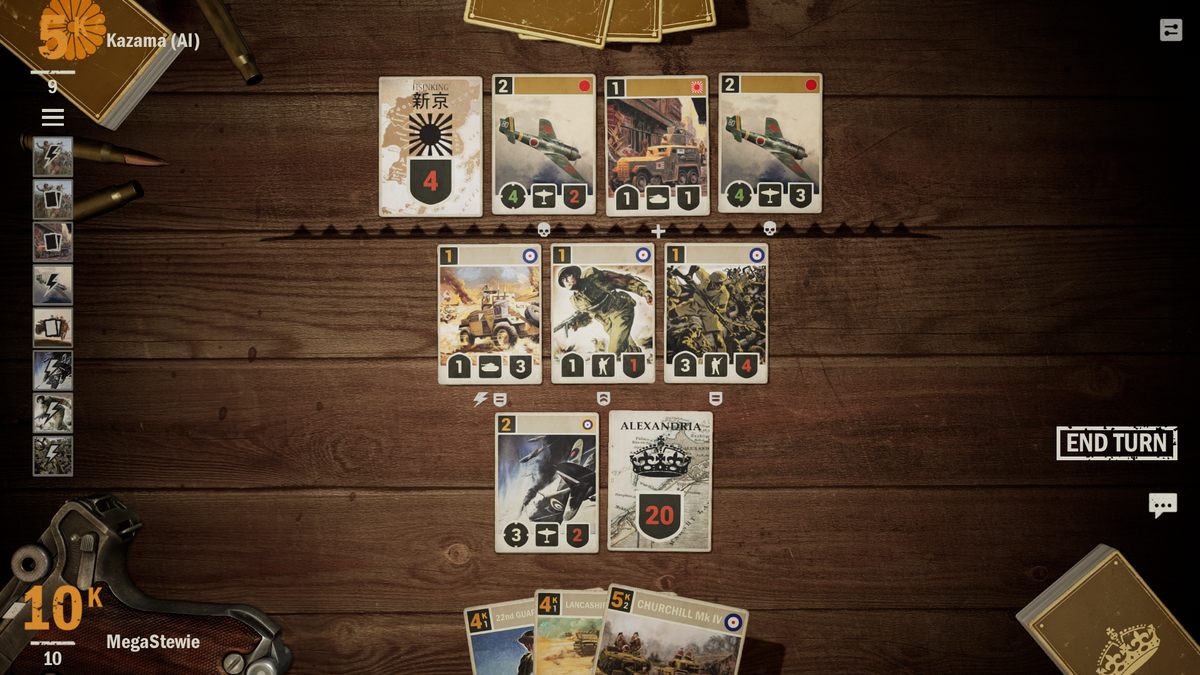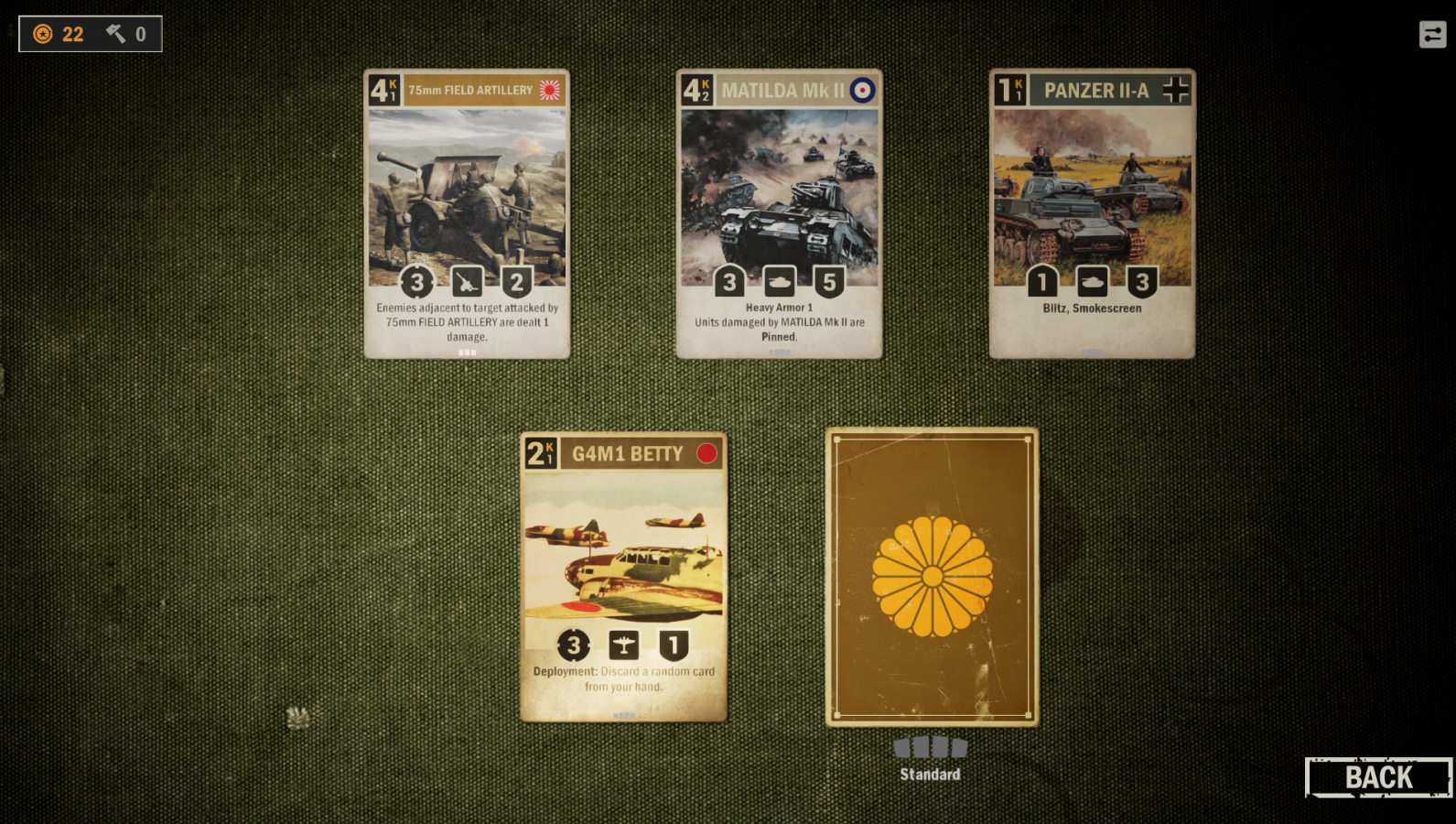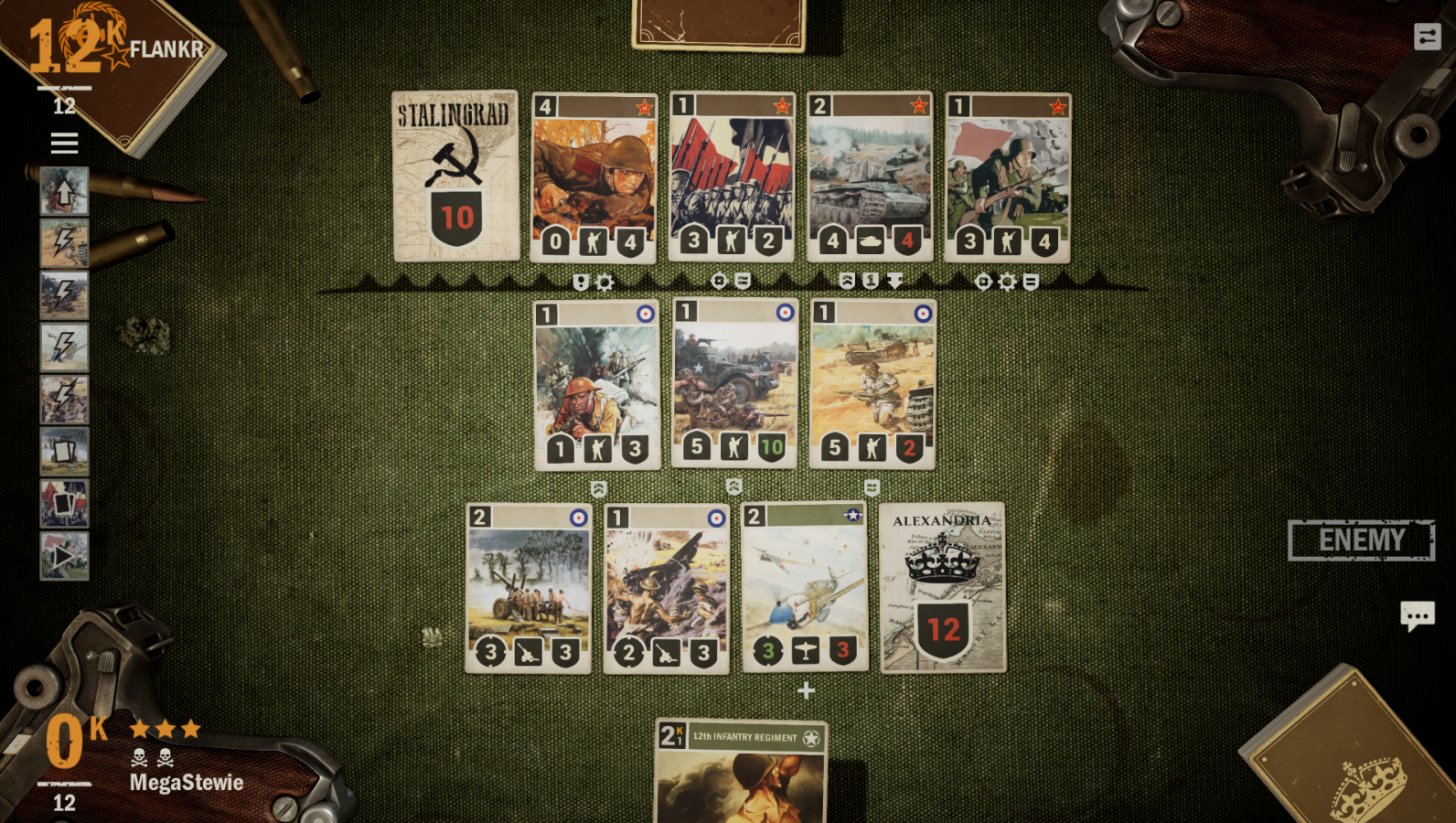
War-based games are nothing new, although they typically exist in the realm of shooters, turn-based strategy games, and so on. World War II has been one of the more popular settings to choose from, which makes sense considering how eventful it was. So why not take this popular setting and move it to a different genre? Enter KARDS: The WWII Card Game on Steam. Now’s your chance to fight as Allies or Axis forces with the power of cards. It’s not perfect, but I admit that it’s pretty fun, especially since it costs nothing to play.
KARDS starts off by having you pick one of the main five nations as your starter deck: United States, Britain, Germany, Soviet Russia, or Japan. You get the starter deck of whichever nation you choose, and must defeat the other four in battle in order to unlock their respective starter decks. I went for the United States and worked my way down the line from left to right on screen. Also, to get more familiar with what each nation had available, once I unlocked a starter deck, I used that starter deck to fight the next nation. That left Japan to be tested in online play, but it still worked out. Before you can even get to the rest of the game, you must defeat each nation and earn their starter decks. It’s a nice mixture of tutorial and letting you get the hang of things before facing other people online. You don’t just get handed the win, you actually have to make the effort to win. I appreciated this because it gave you an actual taste of what future battles could be like, although it can’t truly prepare you for some of the decks that you may face.

Congratulations, you’ve unlocked the five starter decks and can play against other players. You have two modes available to you: battle and draft, although a single player campaign is in testing and may be added later. Battle is when you choose a deck, either a starter one or one you’ve created, and then search for an opponent online. Draft is where cards are randomly taken from packs and laid out in front of you. Only a few show up at a time, but you’re allowed to take only one of that set before the next group shows up. This is done until you have 40 cards, and this deck is what you have to use for your draft run. Draft runs last until you’ve either won seven battles or lost three battles. Depending on how many wins you get by the time it ends, you’ll get certain rewards. These include gold, card packs, and more. The two key differences of draft are that you don’t get to keep any of the cards you used during the run, and that you have to pay gold in order to fight in that mode. It’s only a cost of 15 gold to start the run, but if you’re successful enough, you’ll earn it back. You get gold from winning matches in battle mode and also by completing some challenges (more on that later), so it’s not too big of a cost. The farthest I got on a draft run was five matches, which I have to say I’m still proud of. It was only two off from the max, but I lost in some close matches.
Once the enemy has been located (KARDS’ actual phrasing), then the battle begins. Both players have decks containing 40 cards and draw four at the start of the match. You can choose which ones, if any, that you want to reject and draw that many new cards. This can only be done once, so make your choice wisely. Both players have a mana-like resource pool called kredits on the left side of the screen. These are used to deploy cards to the support line, move them to the frontline, and also attack. On the first turn, players only get one kredit, but this goes up by one every turn. For example, on turn four, you’ll have four kredits to spend, regardless of how many you used the previous turn. Kredits don’t carry over from turn to turn, so don’t plan on trying to save up and build up a reserve. This unfortunately means that any unused kredits just disappear. It’s a bummer having to end your turn knowing that there are wasted kredits. In the top left corner of every card, there’s a number to indicate its kredit cost. That shows you how many kredits it takes to perform any action with it, whether it’s deployment, moving up, or attacking. You can only perform one of these actions per unit unless stated otherwise. Managing kredits is an extremely important aspect of the game, as is managing the frontline. If you don’t plan carefully, you’ll get the floor wiped with you. Trust me, it can get away from you fast.

The goal of each battle is to destroy your opponent’s headquarters, which is represented by an HQ card in their support line. The HQ card has 20 defense by default, but it can be increased as a result of certain cards. When it hits 0, that player loses. How you attack the HQ depends on what cards you have available and what the battlefield looks like. The battlefield consists of two support lines (one for each player), and the frontline. Only one player can have units in the frontline at a time. If the other player wants to move a unit there, they must destroy all opposing units in the frontline. That’s easier said than done, however. All unit cards have an attack value in the bottom left and a guard value in the bottom right. The attack value shows how much damage they do in a fight, while the guard value shows how much health they have. Now, a big thing to consider is that no matter who is attacking, both units involved in the fight do damage to each other. This means that a defending unit can kill an attacking one as it dies, or even survive an attack with heavy damage. There are some exceptions to when both units involved do damage, but that typically only occurs when bomber planes are involved. What you need to know is that every fight causes lasting damage, so you need to carefully think about what moves you make.
There are multiple types of cards you can use, with most of them being units, and others being orders. The units are your forces that can fight on the battlefield, while orders cause whatever effect is stated on the card. To name a few examples, you can raise the attack and guard of a certain unit by 1 permanently, you can send a specified unit back to the respective player’s hand, or you can do two damage to every unit in the frontline. There are plenty of other orders that you can get, with some being way more useful than others. They can be offensive or defensive, but either way they still cost kredits to use, just like the units. Speaking of units, you have infantry, tanks, fighter planes, bombers, and artillery available. Infantry and tanks can only attack targets in the lane directly ahead of them, while planes, bombers, and artillery can attack any target on the battlefield, including the HQ. So that means that infantry and tanks must be in the frontline if they want to damage the HQ; meanwhile, planes, bombers, and artillery can sit safely in the support line and fire away. That being said, they aren’t safe from enemy units of those same types or from enemy orders. Even so, it makes fighting those three units a pain. The varying attack ranges and combat capabilities of each unit will force you to keep an eye on every part of the battlefield. If you don’t, it could cost you dearly.

Each type has their advantages and disadvantages, although the exact card can make all the difference. Not only do the different attack values, guard values, and kredit costs make a difference, but any effects they may have will come into play too. Some of the effects include fury, blitz, guard, and smokescreen. Fury allows the unit to attack twice per turn, blitz allows them to move and attack on the same turn, guard lets them protect every other card in the same line from damage until the respective card is destroyed, and smokescreen protects a card from being targeted until it moves or attacks. There are more effects than that, so make sure you read over every card that gets placed in the battlefield. Not noticing a certain effect can cause you to take some unnecessary damage.
As mentioned earlier, the game is primarily multiplayer, although you can face AI opponents for practice. I never had any connection issues or long search times, which was refreshing in the world of online gaming. I think my longest search lasted about 30 seconds? That’s pretty good if you ask me. Visually, it looks pretty good. The aesthetics easily create a war-time feel to the game, especially coupled with the era appropriate music in the background. The music was quiet and added an almost eerie feeling to the game. It felt like there was a real war going on while I was there playing a card game. You get some nice sound effects as you perform attacks, whether it’s gunfire, explosions, etc. All in all, I’d say KARDS does a pretty great job of creating a WWII centric card battler. The mood feels right, the gameplay is easy to learn yet hard to master, and to top it all off, it’s free to play! What could be better than that, huh? Now, if you’re ready to enlist, sign up with one of the five previously mentioned nations and get ready for war!
KARDS: The WWII Card Game
Great
KARDS is a free to play WWII card battler that combines card battling with resource management. You'll need to think carefully about what cards you play and when if you want to succeed. There are some balance issues, but nothing that ruins the game entirely. Online matchmaking is the quickest I've ever seen.
Pros
- Cool and gritty WWII aesthetics
- Kredits management forces you to make moves carefully
- Variety of card types and effects keep you engaged and guessing
Cons
- Some units have clear advantages and can be a pain to face
- Currently only multiplayer
